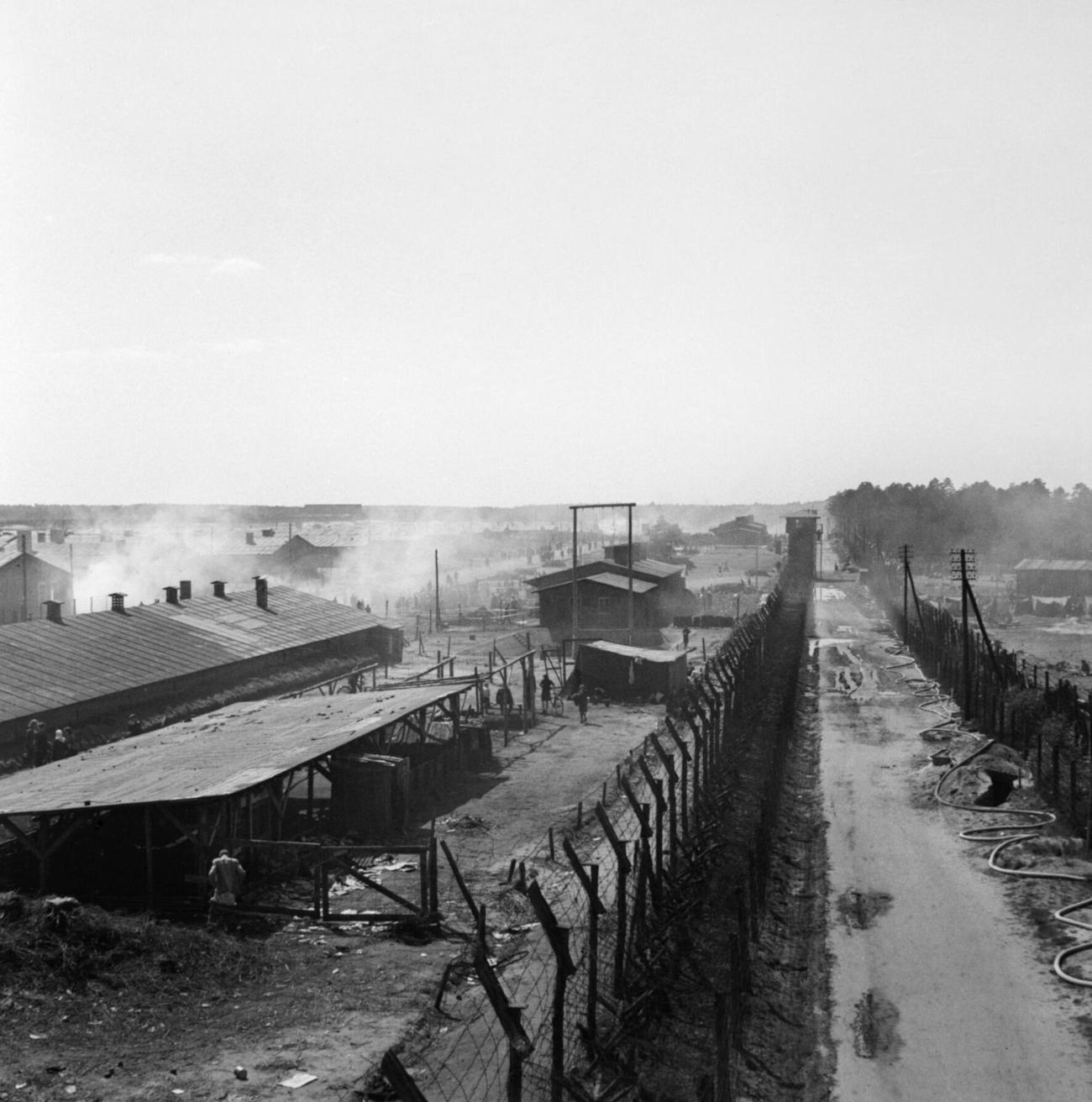Content can be downloaded for non-commercial purposes, such as for personal use or in educational resources.
For commercial purposes please contact the copyright holder directly.
Read more about the The Creative Archive Licence.
Description
The liberation of Bergen-Belsen Concentration Camp, April 1945. The photograph was taken from a watch tower used by the German guards by Sgt H. Oakes of No 5 Army Film and Photographic Unit, a subdivision of the British army. The image shows evacuated Camp No 1.
The Nazi camp system.
From 1934, German authorities established a variety of detention facilities to confine those whom they defined as political, ideological, or racial opponents of the regime.
In the earliest years, concentration camps were established to detain political opponents of the regime, including German Communists, Socialists, trade unionists, and others from left and liberal political circles, where persons were incarcerated without observation of the standard norms applying to arrest and custody.
In time, as well as concentration camps, the system expanded to include labour camps; prisoner-of-war camps; transit camps; and camps which served as killing centres, often called extermination camps or death camps.
About Bergen-Belsen Concentration Camp.
Until 1943, Bergen-Belsen was exclusively a prisoner-of-war (POW) camp. In April 1943, a portion of Bergen-Belsen was converted first into a civilian residence camp and, later, into a concentration camp.
Over the course of its existence, Bergen-Belsen Concentration Camp held Jews, prisoners of war, political prisoners, Roma, Sinti, people who did not conform to the Nazi social norms, e.g., beggars, alcoholics, drug addicts, prostitutes and pacifists (people who believe war is unjustified), people with disabilities, criminals, Jehovah's Witnesses, and homosexuals.
As Allied and Soviet forces advanced into Germany in late 1944 and early 1945, Bergen-Belsen became a collection camp for thousands of Jewish prisoners evacuated from camps closer to the front. The arrival of these prisoners, many of them survivors of forced evacuations on foot, overwhelmed the meagre resources of the camp.
At the end of July 1944, there were around 7,300 prisoners interned in the Bergen-Belsen Camp complex. At the beginning of December 1944, this number had increased to around 15,000, and in February 1945, the number of prisoners was 22,000. As prisoners evacuated from the east continued to arrive, the camp population soared to over 60,000 by 15 April 1945.
By early 1945, prisoners would sometimes go without food for days; fresh water was also in short supply. Sanitation was incredibly inadequate, with few latrines and water faucets for the tens of thousands of prisoners. Overcrowding, poor sanitary conditions, and the lack of adequate food, water, and shelter led to an outbreak of diseases such as typhus, tuberculosis, typhoid fever, and dysentery, causing an ever-increasing number of deaths. In the first few months of 1945, tens of thousands of prisoners died.
Sources.
Imperial War Museum, Photographs: The liberation of Bergen-Belsen Concentration Camp, April 1945 [accessed 18 August 2022]
United States Holocaust Memorial Museum, Holocaust Encyclopaedia: Concentration camp system in depth [accessed 18 August 2022]
">United States Holocaust Memorial Museum, Holocaust Encyclopaedia: Bergen-Belsen [accessed 18 August 2022]
Wikimedia Commons, The Liberation of Bergen-Belsen Concentration Camp, April 1945 (BU4711) (1945) [accessed 18 August 2022]



Do you have information to add to this item? Please leave a comment
Comments (0)
You must be logged in to leave a comment